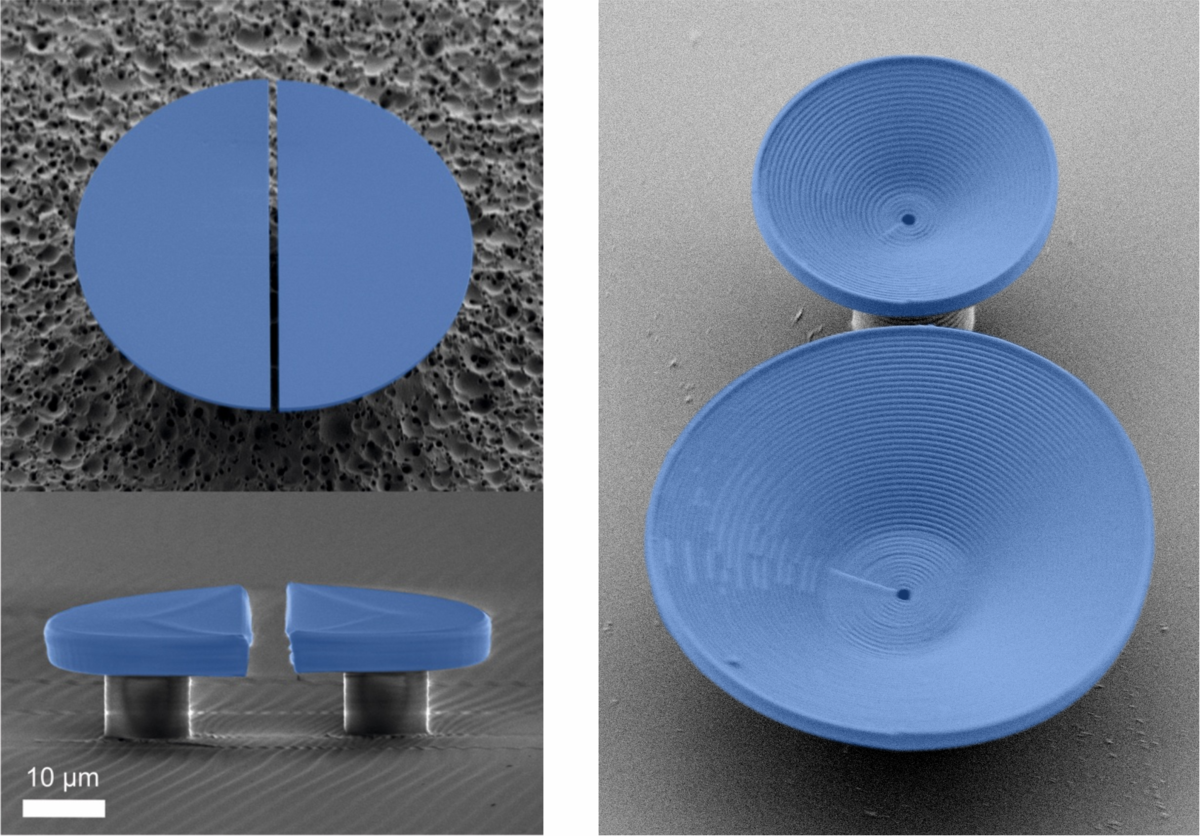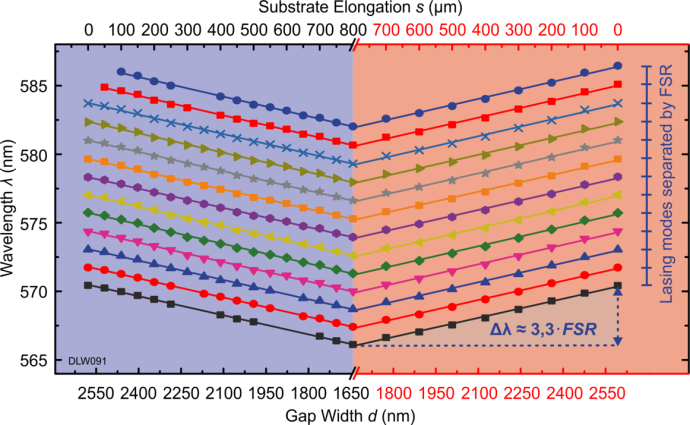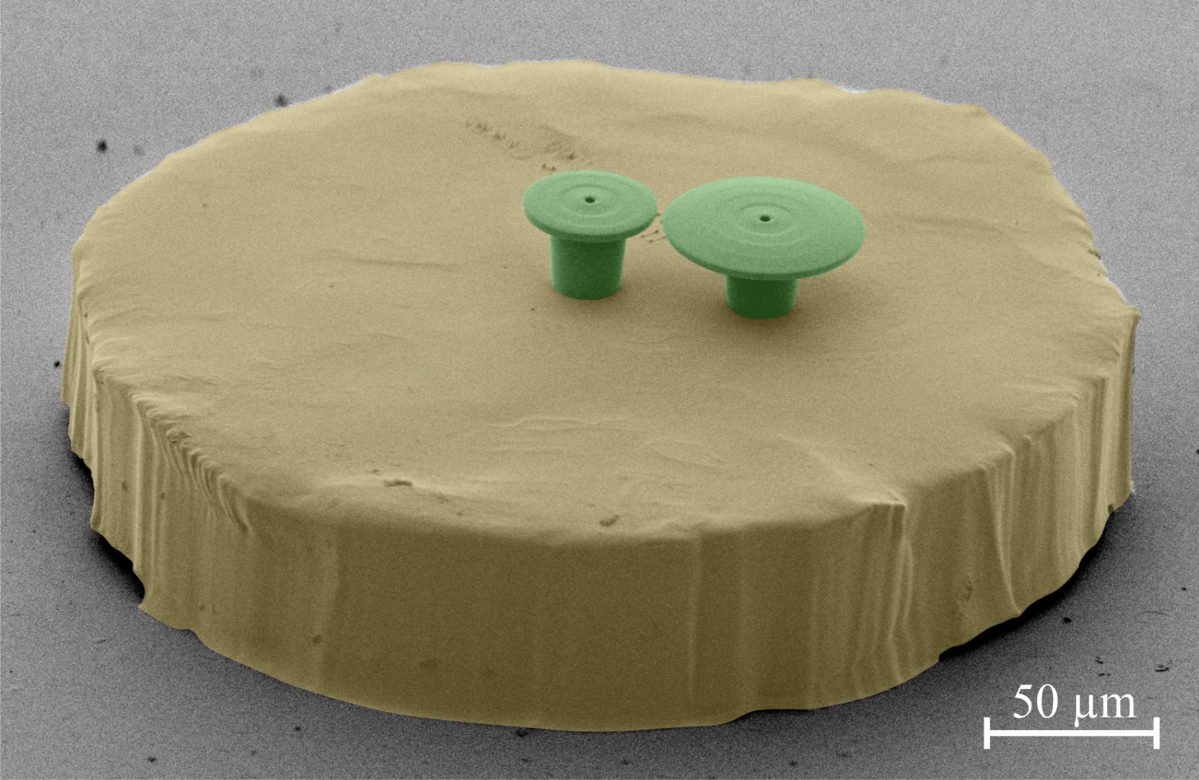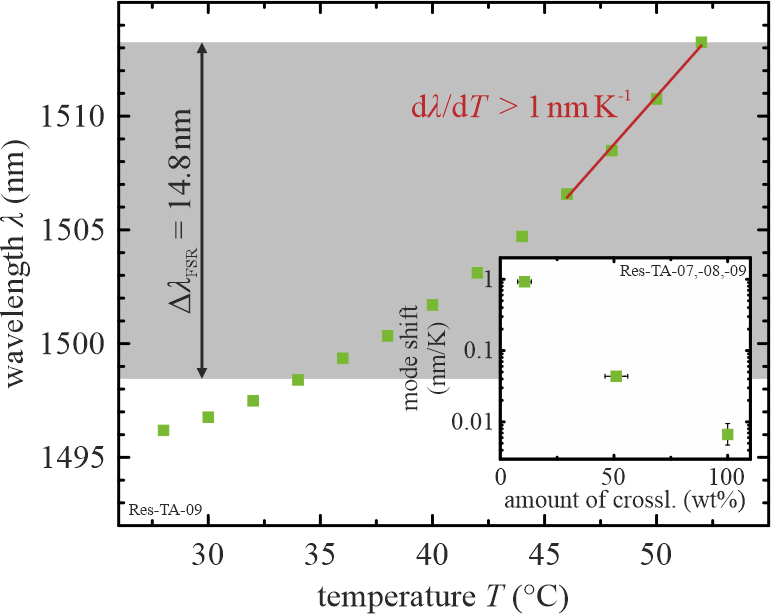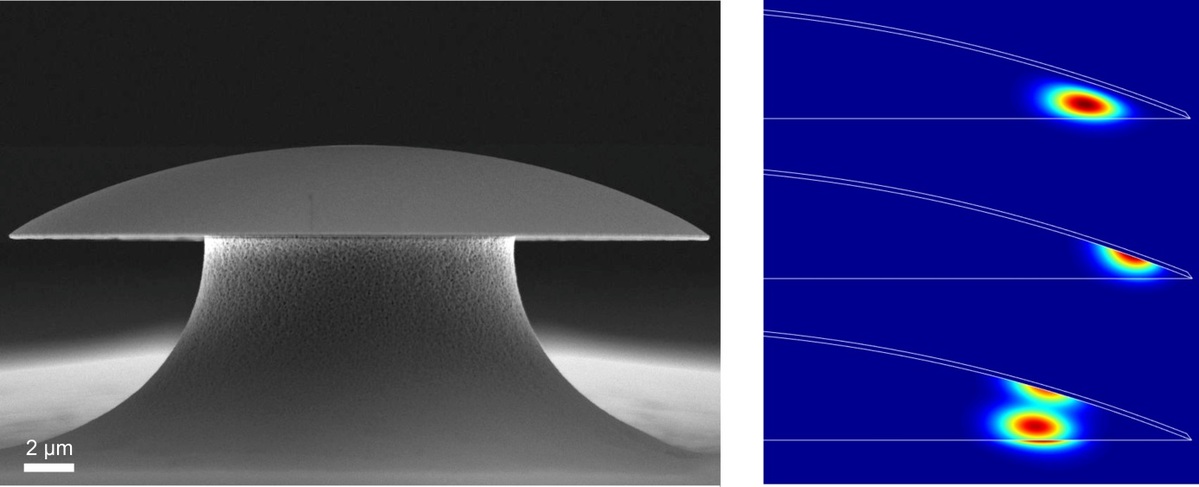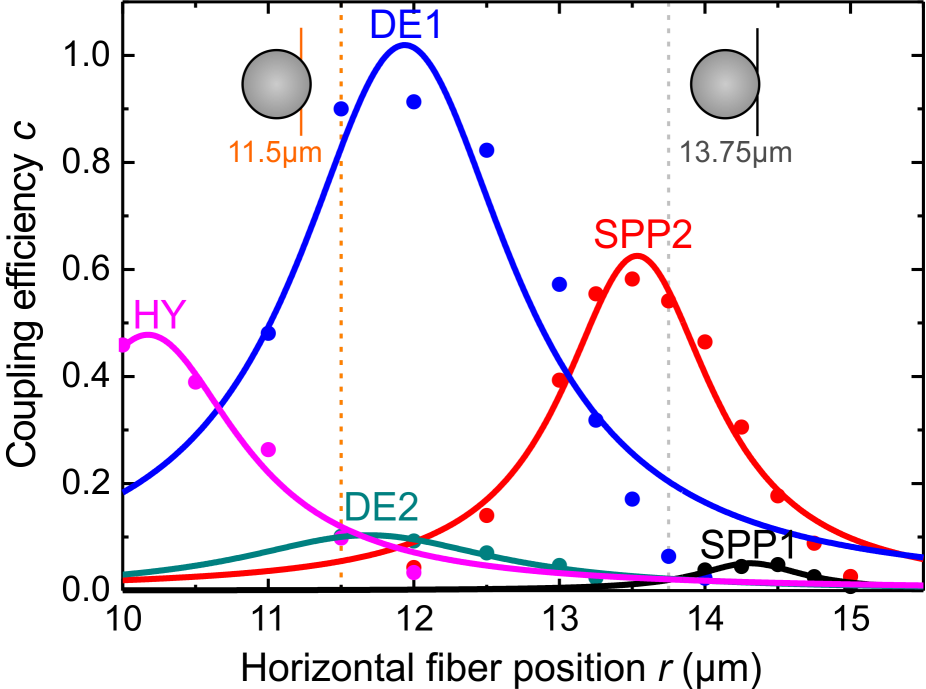Tunable polymeric whispering gallery resonators on flexible substrates
The tunability of the resonance wavelength is crucial for numerous applications of optical micro-resonators like filters or switches.
One current focus of our research is the realization of tunable photonic building blocks, which exploit the flexibility of different polymers and elastomers. First key experiments have been already performed. A new type of whispering gallery resonator, the so-called split-disk resonator has been developed to achieve the tunability of resonant modes over a wide spectral range. This tunability arises from the reversible deformation of the elastomer substrate which affects the size of the gap between two opposite half-disks. Furthermore, such elastomer substrates have been used to realize photonic molecules from up to three goblet-type resonators with flexible and tunable coupling.
Future experiments will study the fabrication and characterization of larger arrays of coupled resonators as well as of hybrid (gaining/absorbing) photonic molecules.
publications:
Tunable photonics based on liquid crystal elastomers
Besides using mechanically deformable elastomer substrates, our research group also exploits the properties of liquid crystal elastomers (LCE) for the realization of tunable photonic building blocks.
At relatively low temperatures liquid crystal elastomers undergo a transition from a state, where the mesogens show nematic alignment, towards a disordered isotropic phase. This transition is accompanied by a fully reversible change in dimension and thus of the optical properties of photonic elements.
LCE can serve as substrate material for whispering gallery resonators allowing precise tuning of inter-cavity gaps by a change in temperature. As a first step a reversible change of the gap depending on the intensity of laser illumination has been was shown recently. In future experiments we aim at observing tunable coupling between several resonators.
Furthermore resonators purely made from LCEs were produced. With this approach, the temperature dependent nature of the material can be used to tune the resonance wavelength of the resonators. An intended tuning of the resonance wavelength by more than one free spectral range has been demonstrated.
publications:
Hybrid plasmonic-photonic whispering gallery resonators
Another focus of our current research on optical whispering gallery resonators is on the intentional enhancement of light-matter interaction. A strong light-matter interaction hereby requires high quality factors and small mode volumes.
While the quality factors of dielectric whispering gallery resonators are very high, their modal volumes are rather large compared to those of plasmonic nanostructures. Thus, a possible strategy to boost light-matter interaction is seen in combining the high quality factors of dielectric resonators with the ability of plasmonic structures to squeeze light down to sub-wavelength dimensions. The advantages of both worlds have been successfully combined in a silver-coated whispering gallery resonator with wedge-like geometry. Besides purely photonic modes, which are localized more in the interior of the resonator, this newly developed resonator type supports also plasmonic modes, which are localized at the interface between the dielectric and the metal. Of special interest for most applications are so called hybrid modes, which arise from the hybridization of photonic and plasmonic modes and are also supported by this kind of resonators. These modes combine the advantages of photonic and plasmonic modes, e. g., the high quality factors associated with photonic modes and the small mode volumes associated with plasmonic modes.
publications:

